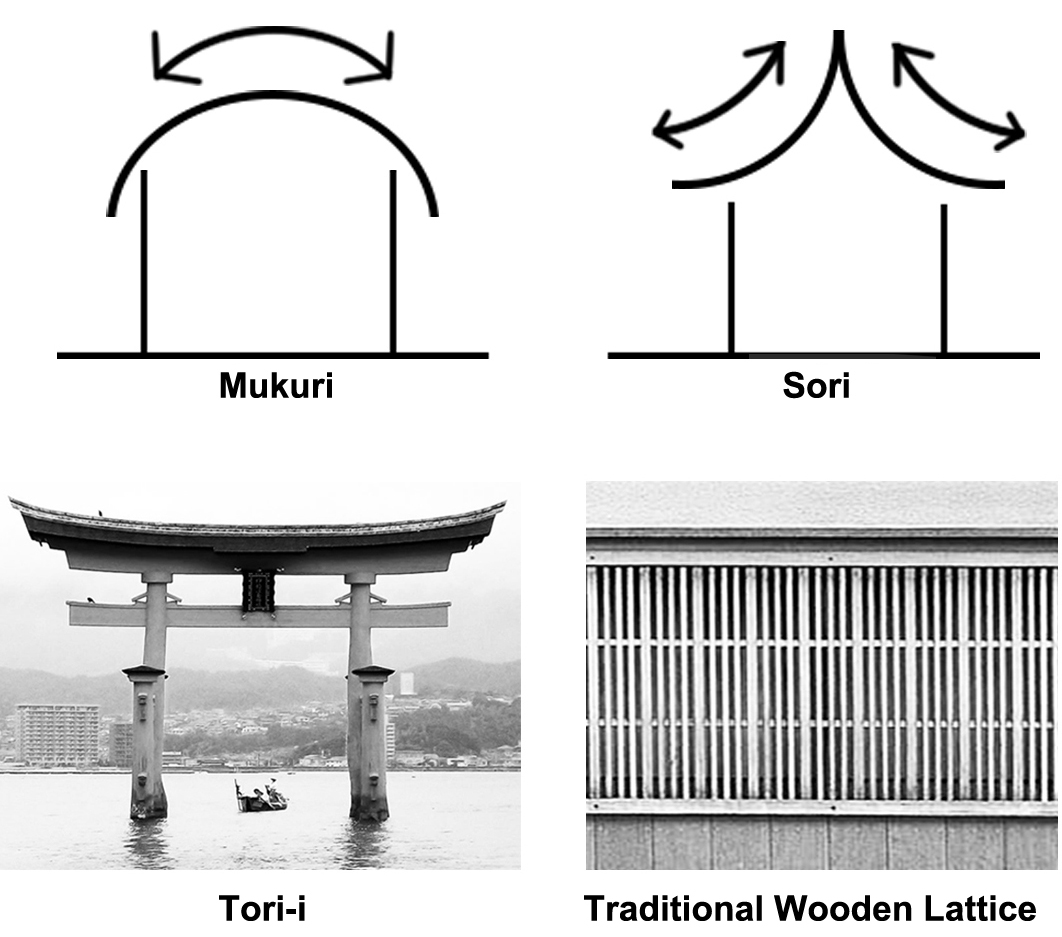Japanese Characteristics in High-rise Buildings of Tokyo, Japan
Main Article Content
Abstract
This research aims to explain the transition of Japanese characteristics in high-rise buildings using several transferrable procedures, and to verify how much the appearance of Japanese characteristics still remain. A total of 9 selected buildings, which were built after world war II (1960 to 2013), and published in the international data source, were studied. The method included searching the history and the development of high-rise or vertical structures in each period. The data synthesis consisted of studying the 9 buildings across several aspects, such as their physical features, relationship with their surroundings, layout plan, form, interior space, materials in comparison with other buildings, and the origin of the Japanese characteristics. The representative Japanese characteristics, which have been transferred to the present were identified as follows: 1) Human beings and the landscape were considered more important than other features, and this concept was represented only in a symbolic way. 2) Aesthetic from natural processes have changed due to human contrivance. In conclusion, the form and interior space have become modernized and internationalized. 3) The elements were used in the form of adaptation rather than in direct usage in past buildings, however the high-rise buildings still emphasize important Japanese characteristics, which persist to a small extent in every building.
Downloads
Article Details

This work is licensed under a Creative Commons Attribution-NonCommercial-NoDerivatives 4.0 International License.
All material is licensed under the terms of the Creative Commons Attribution 4.0 International (CC-BY-NC-ND 4.0) License, unless otherwise stated. As such, authors are free to share, copy, and redistribute the material in any medium or format. The authors must give appropriate credit, provide a link to the license, and indicate if changes were made. The authors may do so in any reasonable manner, but not in any way that suggests the licensor endorses you or your use. The authors may not use the material for commercial purposes. If the authors remix, transform, or build upon the material, they may not distribute the modified material, unless permission is obtained from JARS. Final, accepted versions of the paper may be posted on third party repositories, provided appropriate acknowledgement to the original source is clearly noted.
References
Arcspace. (2018). Travel Guide: Tokyo. [Online]. Retrieved April 22, 2019, from https://arcspace.com/travel/travel-guide-tokyo/
Black, A. (2000). The Japanese House: Architecture and Interiors. Massachusetts: Tuttle Publishing.
Bognar, B. (2011). Guide to Contemporary Japanese Architecture. Tokyo: Maruzen Publishing Co., Ltd.
DITP, D. O. (2016). Department of International Trade Promotion Executive Office. [Online]. Retrieved November 23, 2019, from https://www.ditp.go.th/contents_attach/148923/148923.pdf
Greallegretti. (2015). Element l The Engawa. [Online]. Retrieved April 3, 2019, from https://archiscapes.wordpress.com/2015/01/15/japanese-traditional-engawa-space/
Gruntz, L. (2016). Architectural guide to Tokyo’s. [Online]. Retrieved February 19, 2019, from https://architecturetokyo.wordpress.com/
Guides, I. (2018). Tokyo City Guide. Insight Guides (7th ed.)
Fuji, M. (2017). Engawa : connecting inside and outside naturally. [Online]. Retrieved November 23, 2019, from http://www.interactiongreen.com/engawa/
Isavorapant, C. (2000). Nature, Space and Place – Japanese Architecture Digest. Bangkok: Corporation 4d.
Isozaki, A. (2006). Japan-ness in Architecture. MA: MIT Press.
Japantimes. (1998). Japan’s first skyscraper turns 30. [Online]. Retrieved November 23, 2019, from https://www.japantimes.co.jp/news/1998/04/17/national/japans-first-skyscraper-turns-30/
Koren, L. (1994). Wabi-sabi for Artists, Designers, Poets & Philosophers. Stone Bridge Press.
Koutsugeorga, G. (2016). Wabi-sabi in architecture. [Online]. Retrieved May 5, 2020, from https://www.zenvita.com/blog/wabi-sabi-in-architecture.html
Kurokawa, K. (1977). Metabolism in architecture. London: Studio Vista.
Locher, M. (2015). Japanese Architecture: An Exploration of Elements & Forms. Tokyo: Tuttle Publishing.
Long, T. (2011). March 9, 1945: Burning the Heart Out of the Enemy. [Online]. Retrieved November 23, 2019, from https://www.wired.com/2011/03/0309incendiary-bombs-kill-100000-tokyo/
Maki, F. (1988). The Roof at Fujisawa. Perspecta, 24, 106-121. Retrieved from https://www.jstor.org/stable/1567128?seq=1
Merin, G. (2013). AD Classics: Shizuoka Press and Broadcasting Center / Kenzo Tange. [Online]. Retrieved November 23, 2019, from https://www.archdaily.com/422486/ad-classics-shizuoka-press-and-broadcasting-center-kenzo-tange
Museum, M. A. (2018). Japan in Architecture: Genealogies of Its Transformation. Tokyo: Echelle-1.
Nishi, K., & Hozumi, K. (1996). What is Japanese Architecture?: A Survey of Traditional Japanese Architecture.USA: Kodansha USA.
Nute, K. (2004). Place, time, and being in Japanese architecture. New York: Routledge.
Perez, R. I. (2014). The Historical Development of the Tokyo Skyline. Journal of Asian Architecture and Building Engineering, 13(3), 609-615. Retrieved from https://www.researchgate.net/publication/285809584_The_Historical_Development_of_the_Tokyo_Skyline_Timeline_and_Morphology
Pernice, R. (2014). Changing Architectures and Evolving Urbanism in Modern Japanese Urban Environment. IACSIT International Journal of Engineering and Technology, 6(5), 351-357. Retrieved from https://www.researchgate.net/publication/269840062_Changing_Architectures_and_Evolving_Urbanism_in_Modern_Japanese_Urban_Environment
Priscilla, C. (2019). Enka And Japanese Hidden Beauty. [Online]. Retrieved May 5, 2020, from https://www.numeroventi.it/enka-and-japanese-hidden-beauty/
Seligmann, A. (2016). Japanese Modern Architecture 1920-2015: Developments and Dialogues. UK: The Crowood Press.
Shea, N. (2019). Tokyo became a megacity by reinventing itself. [Online]. Retrieved November 23, 2019, from https://www.nationalgeographic.com/magazine/2019/04/how-tokyo-japan-became-megacity-by-rebuilding-after-earthquake-war/
Sveiven, M. (2011). AD Classics: Nakagin Capsule Tower / Kisho Kurokawa. [Online]. Retrieved November 23,2019, from https://www.archdaily.com/110745/ad-classics-nakagin-capsule-tower-kisho-kurokawa
Taut, B. (1936). Fundamentals of Japanese architecture. Tokyo: Kokusai Bunka Shinkokai.
Watanabe, H. (2001). The Architecture of Tokyo. London: Edition Axel Menges.
Wongphyat, W. (2017). From Tradition to Modernity: The In-Between Space in Japanese Dwellings. ACADEMIC JOURNAL of ARCHITECTURE, 66, 139-156. Retrieved from https://www.tci-thaijo.org/index.php/AJA/article/view/115433
Young, D. Y. (2003). Introduction to Japanese Architecture. Hongkong: Periplus Editions.


